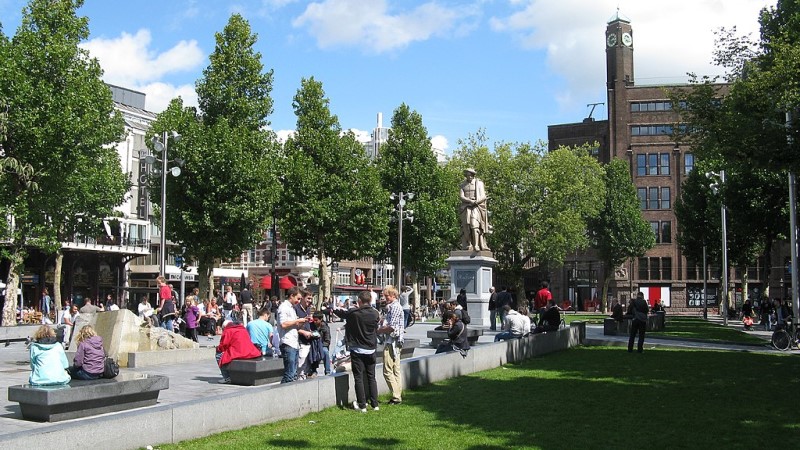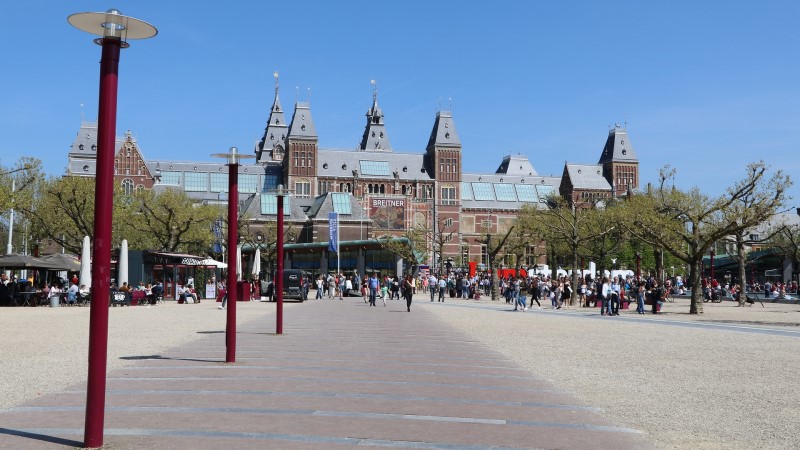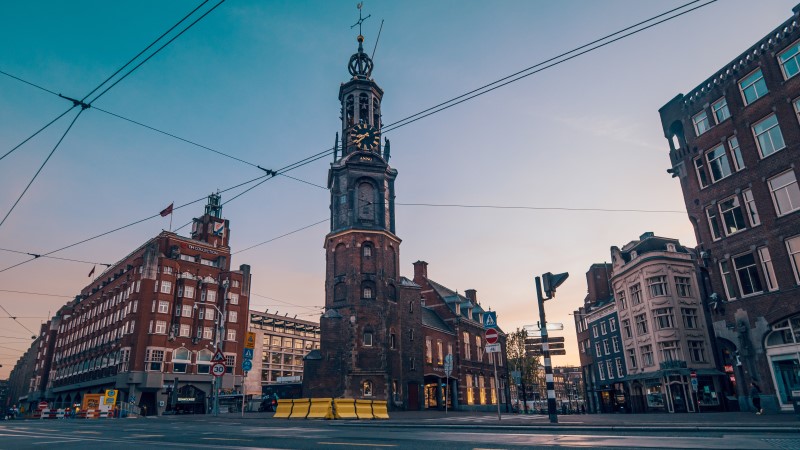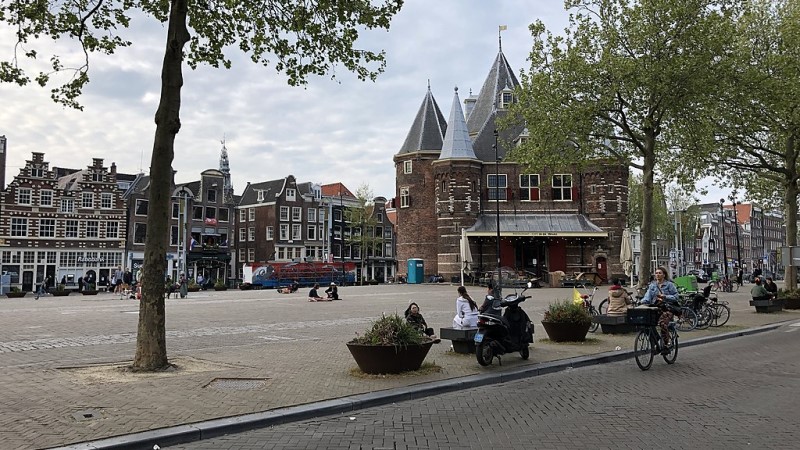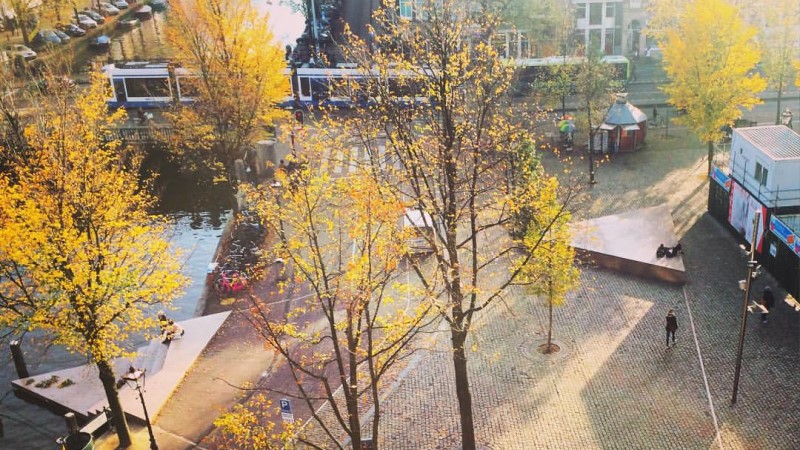City Squares of Amsterdam
Although Amsterdam in its central ring of canals is a densely populated 17th century city, preserved almost intact throughout the centuries, it also has a number of city squares, which are open and spacious.
Walking around the city and seeing the sights is great. But if you have an interesting and factual commentary, efficient route and knowledge of hidden treasures, then your vacation time sure is used better. Look at the offer of guided Amsterdam city tours.
The Dam square
The central and main square of Amsterdam. With important points of interest around it. The Royal Palace, The National monument of freedom, Nieuwekerk church and an elegant department store De Bijenkorf.
The name comes from damming the river Amstel here. Like almost all squares in the old center, the Dam square has been originally a market. Now it is full of shops, cafés and street performers. And pigeons.
The white stone National Monument commemorates the WWII victims. It has been renovated a couple of years ago, with the help of the German state.
Leidseplein
If you want to spend time in the real centre of entertainment in Amsterdam, this is the place to be. Amsterdam Central Station has been almost built on this square at the end of the 19th century, when it seemed that railways will be the axis of our life. Leidseplein gets very busy in the evening. There are many cafes, cinemas, theatres around and many street performers and visitors fill the square.
Rembrandtplein
A square literally surrounded by cafes, hotels and nightclubs always full of tourists who often like to meet other people in journey of both sexes. I the middle surrounded by patches of green an obligatory monument of the famous painter. Very busy place throughout the whole year.
Museumplein
The most important square off the canal ring. Directly behind the Rijksmuseum and next to Van Gogh Museum and the modern art museum Stedelijk Museum. It is closed from the South-West by the 19th century concert building Concertgebouw.
Previously just a vast open space with a busy street in the middle, the Museumplein was redesigned in 1999 as a result of an architectonic competition.
The Munt square
A busy street crossing created on the wide bridge on the Singel, the Munt (Dutch: de Munt) is an important orientation point, marked by the Munt tower and the Regulier's Gate, which is a remainder of the old city walls. Proximity of the Flower market, many cinemas, and two squares - the Waterlooplein and the Rembrandtplein, make it always very busy.
Waterlooplein
What was traditionally a biggest city market in the proximity of the traditionally Jewish quarters of the town is today a place dominated by a huge white building of an opera combined with the Town Hall called Stopera. You will find the market behind the Stopera. A Jewish Museum is located at the square. And the house Rembrandt lived and worked at its near proximity. Under the Stopera building there are two huge car parks - the best opportunity to park your car close to the city centre.
Nieuwmarkt
One of the three markets of the old Amsterdam (Nieuwmarkt, Westermarkt and Nordermarkt) which until today remain an important spaces for the city life. The Nieuwmarkt still functions as a market on some days of the week, but its is the proximity of the crowded Red Light District and more and more lively Chinatown that makes it busy any time of the day. An interesting De Waag (Weigh) building remains centrally on the square. You will certainly cross it not once on the way to the Rembrandt's house, the Jewish Museum, Hortus Botanicus or the Zoo Artis.
Westermarkt
With the highest in town Westertoren (Western tower) and the huge pink stone triangle of the Homo Monument behind the big Westerkerk church, situated centrally on the square, Westermarkt is today often a space for celebrations and outdoor exhibitions. The Anne Frank’s House is located just next to the square, directly at the Prinsengracht, behind the Westertoren.
Noordermarkt
Situated in the in the old district of Jordaan – Noordermarkt (Northern market), is an old market in the North of the old canal ring, but today as the tow grew throughout the centuries, very much in the old center. It still functions on Saturday and Monday as a market. On other days remains a quiet, empty space surrounded with trendy cafes and restaurants.
Het Spui
Created by the covering of the Single in 1882, this small and relatively quiet square in the very center of the old town is an important place for the city culture. Several bookshops are to be found on Het Spui, as well as literary cafes.
Centrally on the Spui stands a small monument of a street boy called Lieverdje ("Sweetie") which reminds a visitor about the youth Provo movement of the 60-ties and the first protests against big corporations, which took place here at the time. Typically for Amsterdam, the Liverdje sculpture memorizing these events, has been offered to the city by a big tobacco company.
- Photos - Wikimedia Commons - Kleon3 , Yair Haklai , Hay Kranen , Geert-Jan Edelenbosch , Yuri Loginov - photos cropped - creative commons license (creativecommons.org/licenses/by/4.0/deed.en)








